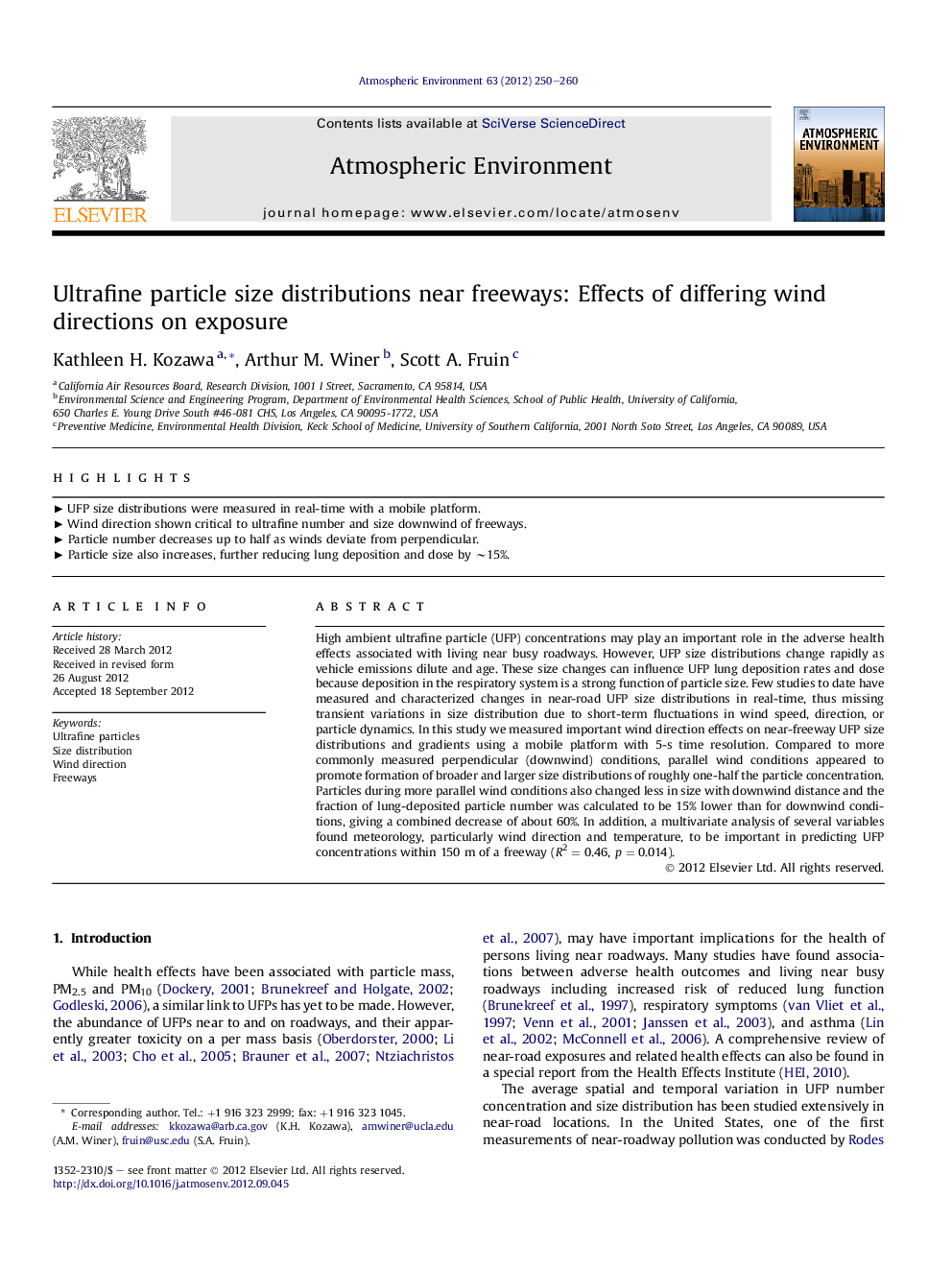| Article ID | Journal | Published Year | Pages | File Type |
|---|---|---|---|---|
| 4438616 | Atmospheric Environment | 2012 | 11 Pages |
High ambient ultrafine particle (UFP) concentrations may play an important role in the adverse health effects associated with living near busy roadways. However, UFP size distributions change rapidly as vehicle emissions dilute and age. These size changes can influence UFP lung deposition rates and dose because deposition in the respiratory system is a strong function of particle size. Few studies to date have measured and characterized changes in near-road UFP size distributions in real-time, thus missing transient variations in size distribution due to short-term fluctuations in wind speed, direction, or particle dynamics. In this study we measured important wind direction effects on near-freeway UFP size distributions and gradients using a mobile platform with 5-s time resolution. Compared to more commonly measured perpendicular (downwind) conditions, parallel wind conditions appeared to promote formation of broader and larger size distributions of roughly one-half the particle concentration. Particles during more parallel wind conditions also changed less in size with downwind distance and the fraction of lung-deposited particle number was calculated to be 15% lower than for downwind conditions, giving a combined decrease of about 60%. In addition, a multivariate analysis of several variables found meteorology, particularly wind direction and temperature, to be important in predicting UFP concentrations within 150 m of a freeway (R2 = 0.46, p = 0.014).
► UFP size distributions were measured in real-time with a mobile platform. ► Wind direction shown critical to ultrafine number and size downwind of freeways. ► Particle number decreases up to half as winds deviate from perpendicular. ► Particle size also increases, further reducing lung deposition and dose by ∼15%.
